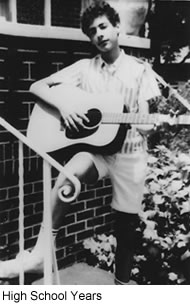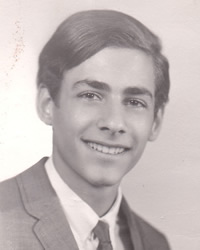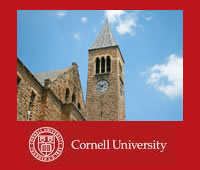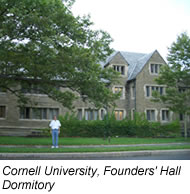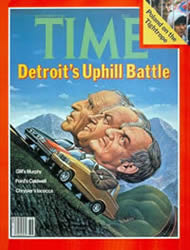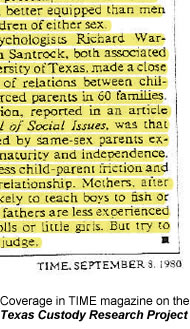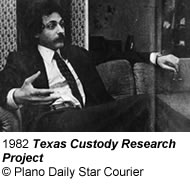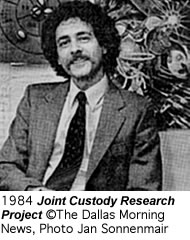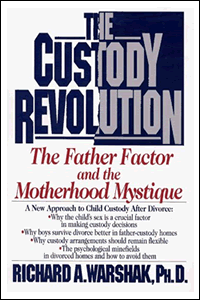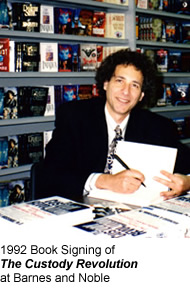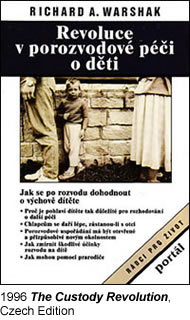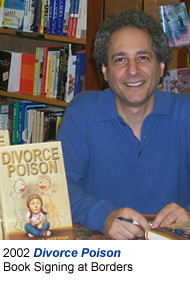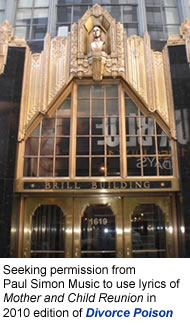My Story
QuickLinks
Manhattan-Brooklyn-Ithaca-Dallas
The 1970s
Ph.D. - Onset of Divorce Research
Texas Custody Research Project — Private Practice
The Custody Revolution
Divorce Poison
Manhattan-Brooklyn-Ithaca-Dallas
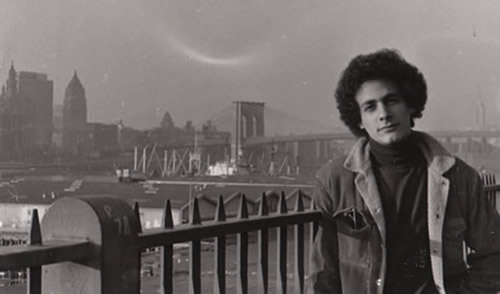
I was born in Manhattan, New York in 1949, the second son to parents who were married for 37 years until my father’s death. Apart from my first two years in Manhattan, a stint in Caracas, Venezuela as a toddler, and second and third grades in Jacksonville, Florida, I grew up in Brooklyn, New York. I attended public school and graduated from Midwood High School at the age of 16.
 I pursued a Bachelor of Science degree in Industrial and Labor Relations at Cornell University while escalating protests against the draft and the war in Vietnam unfolded in the background. Classes were disrupted during the armed takeover of the student union building in 1969 (the photo of students marching out of the building carrying rifles and wearing bandoliers won a Pulitzer Prize). This was my first direct experience with the perils of poor conflict management, presaging my exposure to parents in high conflict divorces.
I pursued a Bachelor of Science degree in Industrial and Labor Relations at Cornell University while escalating protests against the draft and the war in Vietnam unfolded in the background. Classes were disrupted during the armed takeover of the student union building in 1969 (the photo of students marching out of the building carrying rifles and wearing bandoliers won a Pulitzer Prize). This was my first direct experience with the perils of poor conflict management, presaging my exposure to parents in high conflict divorces.
During my four years at Cornell, I worked at the landmark restaurant Johnny’s Big Red, first on their pizza truck, and later, as a waiter, bartender, and chef. Johnny’s was a favorite hangout of Richard Farina and Thomas Pynchon. My largest tip was from Duke Ellington, a double treat because of my love for big band jazz. I also worked as a TV and HiFi repairman. One afternoon I spent several fruitless hours trying to fix a woman’s color television. Watching me interact with her children, this mother commented that I wasn’t so good with TVs but I was great with kids. She offered me a position running the afterschool program for teenagers at her church. This was my first paid job working with children.
Personal Journal Entry, Referring to Summer 1970, Age 20
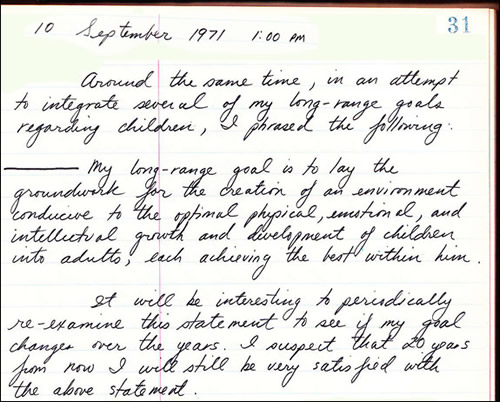
After completing my work at Cornell, I became a counselor at a residential treatment center in Manhattan. I worked there for four years as a father-surrogate to a group of emotionally disturbed children and teens. My experience with those children taught me more about understanding and helping troubled children than did all the formal education and training that followed. It also confirmed my goal to become a child psychologist.
I gratified my hunger for information about clinical and child psychology by reading works by Haim Ginott, Virginia Axline, Nathaniel Branden, and Richard Gardner. I learned about Dr. Gardner’s work when the New York Times excerpted The Boys and Girls Book About Divorce (the first self-help book for children of divorce) in the Sunday magazine, and then later published an article about his innovative therapeutic approach, The Mutual Story-Telling Technique.
During this same period, I pursued the Master of Arts in Psychology program at City College of the City University of New York (CCNY). At CCNY I was fortunate to have the opportunity to learn from Ethel Weiss-Shed, Ph.D. and Gertrude Schmeidler, Ph.D. Both helped shape my respect for, and commitment to, methodologically rigorous psychological research, providing an excellent foundation for my subsequent studies on divorce and child custody.
After passing my examinations to become a candidate for the M. A. degree, and half-way through the research for my Masters thesis, I was accepted to the doctoral program in clinical psychology at the University of Texas Southwestern Medical Center in Dallas (at the time called the U. T. Health Science Center). The program invited me to enroll the very next semester, without requiring the completion of my Masters thesis, and so, in August 1974, I moved to Dallas, Texas.
Ph.D. — Onset of Divorce Research
The first year in Dallas I met my future wife, Sandra. She had just completed her Ph. D. in the program I had just begun. We met at a conference given by Dr. Gardner on psychotherapy with children and adolescents. This was the same man whose work I had read when I first decided to study psychology.
In 1977 I began a psychology internship at the Dallas Child Guidance Clinic, a United Way agency providing outpatient treatment for children with emotional and behavior problems. The first three children I treated were boys from divorced homes who had minimal contact with their fathers. Was this mere coincidence, or did their parents’ divorces make growing up that much more difficult for these boys? The answer I found in the psychology journals confirmed that children from divorced homes, particularly boys, were indeed more likely than other children to need professional help to cope with emotional problems.
I was drawn to studying the experience of children growing up fatherless for another reason. In 1912, when my father was only two years old, his father was struck by a runaway horse and cart and died instantly. I had always wondered what it was like for my dad to be raised without his dad. How would his life have been different if his father had survived the accident?
Texas Custody Research Project — Private Practice
Also in 1977, I participated in a graduate seminar led by Professor John Santrock. Dr. Santrock is a leading scholar on the impact of father absence on children and the most prolific author of psychology textbooks. At that time, everything we knew about the effects of divorce on children was based on research with children growing up in their mother’s custody. Dr. Santrock invited me to collaborate with him on the first project that directly compared children growing up in father-custody homes to children in mother-custody homes. To ensure the accuracy of our results, we employed state-of-the-art scientific safeguards, including carefully matched control groups and measures with high reliability. The sophisticated design of our groundbreaking studies earned a high degree of respect from our peers and our studies were published in prestigious academic journals.
My work in what became known as the Texas Custody Research Project launched a career-long project of examining prevailing and proposed child custody assumptions and practices in the light of logic and scientific data. In December 1978 I completed my doctoral dissertation, "The Effects of Father Custody and Mother Custody on Children’s Personality Development."
The Texas Custody Research Project continued, and Time magazine wrote about our work. The article brought a flurry of media interviews, followed by a storm of inquiries from desperate fathers fearful of losing meaningful contact with their children. This response helped me see, in very human terms, the magnitude of suffering caused by the custody practices that were then prevalent.
The media coverage also exposed my work to detractors. The results of our studies and those of our colleagues led to the conclusion that in general children of divorce were harmed by the greatly diminished contact they had with their fathers. Merely suggesting that children could benefit from policies that promoted greater father involvement than was common in the late 1970s led to my being mistakenly branded a fathers’ rights advocate. I was challenged early in my career to deal with such criticism. Often, those who disagree with my ideas, or who don’t like the results of my studies, recast my ideas in exaggerated form or try to dismiss my work as driven by an agenda. Fortunately, my subsequent work assisting divorced mothers and highlighting the dangers of joint custody with abusive fathers has corrected this misperception. In fact, reviewers of my work have specifically praised my balanced treatment of the concerns of mothers and fathers.
After receiving my Ph.D. in 1978, I took a job with the Child Guidance Clinic (where I had served as an intern), consulted one day a week to the Special Education department of a local school system, and taught psychology classes at the University of Texas at Dallas. The following year I established a part-time private practice diagnosing and treating children, adults, and families.
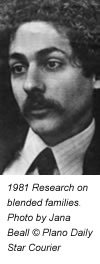 Dr. Santrock and I received a large grant from the National Institute of Mental Health in 1981 to continue our studies using the same methods to learn about stepfamilies. The results of this project appeared in several professional publications, including an article in the prestigious peer-review journal Child Development. These studies and publications, and my subsequent ones, are cited often in social science literature and in courtrooms and legislatures throughout the world.
Dr. Santrock and I received a large grant from the National Institute of Mental Health in 1981 to continue our studies using the same methods to learn about stepfamilies. The results of this project appeared in several professional publications, including an article in the prestigious peer-review journal Child Development. These studies and publications, and my subsequent ones, are cited often in social science literature and in courtrooms and legislatures throughout the world.
In 1983 I helped establish the Dallas Society for Psychoanalytic Psychology, an organization that promotes the study of psychoanalytic, insight-oriented approaches to psychotherapy. The following year I founded the Bulletin of the Dallas Society for Psychoanalytic Psychology, still in publication after twenty-five years. I served as Editor-in-Chief for seven years until I was elected President of DSPP.
For the remainder of the decade I maintained my office practice, continued working on research projects, and developed a Parent Questionnaire that is still widely used by mental health professionals to help better understand the problems of children and teenagers. The media increasingly requested my assistance with articles on divorce and child custody, and these articles attracted frequent invitations to present my research as an expert witness in custody trials. I decided that I could best serve the court by integrating my research with child custody evaluations. This experience as an evaluator, coupled with my research and my clinical practice working with families of divorce, provided the foundation needed to present a comprehensive view of custody issues in a popular format.
The Custody Revolution
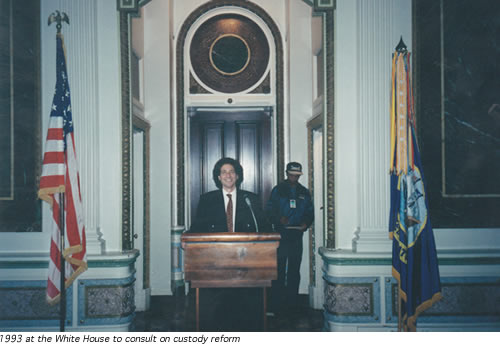
In 1992 my first book was published: The Custody Revolution: The Father Factor and the Motherhood Mystique (1992, Simon & Schuster; 1995 Czech translation). The Custody Revolution offers practical advice to parents and professionals dealing with custody decisions. In the book I also recommended fundamental reforms in custody practices that have since been adopted and are now considered mainstream.
Excitement followed in the year after my book’s release. I was invited to the White House to consult on custody reform. I discussed the applicability of research to proposals on uniform child custody policy to be presented to the United States Congress. I also became the youngest person in the University of Texas Southwestern Medical Center Division of Psychology to reach the rank of Clinical Professor.
Nearing the end of the decade, I decided to tackle the three most controversial issues in child custody litigation: relocation cases, disputes about whether one parent’s interactions with young children should be restricted to daytime-only contacts, and cases in which parental alienation is raised as a central issue.
In the late 1990s I read a brief submitted to the California Supreme Court on relocation — when a custodial parent wants to move the child some distance away from the other parent. I believed the brief gave an unbalanced account of the relevant research, and I thought more balance was needed. In response I wrote an article offering a more comprehensive analysis of the subject. When the California Supreme Court took on another relocation case three years later, I submitted an amicus brief providing an analysis of the psychological issues bearing on the case. The brief was endorsed by leading divorce experts throughout the country. Known as the Warshak Brief, it is credited with influencing the nearly unanimous landmark ruling by the Supreme Court of California. The Court decided that relocation cases are too complex to lend themselves to absolute rules either favoring or opposing relocation and instead favored giving judges discretion to consider a wide range of factors in deciding the child’s best interests in relocation cases.
I wrote Blanket Restrictions to answer the question: Should young children be required to spend every night with the same parent after divorce? The article challenges prevailing practices, that restrict young children from overnight contacts with a parent, by exposing the lack of scientific foundation for the common practice. Blanket Restrictions helped reform parenting plans for young children.
My work on the psychology of alienated children established my reputation as one of the world’s leading authorities on this problem. I was invited to write the chapter on Parental Alienation Syndrome for the Expert Witness Manual, a guide for attorneys and judges dealing with expert testimony. During the preparation of this chapter, I contacted Dr. Gardner, the most well-known authority on the problem of alienated children at the time. He graciously extended an invitation to meet with him to discuss his work on the subject. Subsequently, Dr. Gardner and I delivered keynote speeches at a conference in Frankfurt, Germany. The man whose work contributed to my development as a child psychologist, and whose conference in Dallas brought Sandra and me together, had now become a colleague. Sadly, in 2003, Dr. Gardner passed away. His staff and his family referred his practice to me, hoping that I would carry on the work of educating the public about the suffering of alienated children.
Divorce Poison
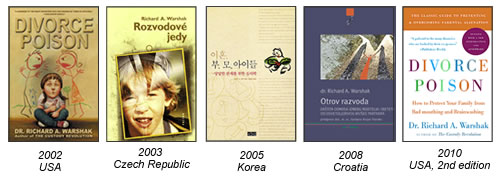
My book, Divorce Poison: How to Protect Your Family from Bad-mouthing and Brainwashing (originally published in 2002), is the best-selling book on the psychology of alienated children. It is considered a classic resource for parents in conflict and the professionals who help them. Internationally, Divorce Poison was published in several languages and one of my professional articles was cited in the German Civil Code on cases involving alienated children.
My project of shining the light of social science on custody assumptions has produced influential articles on some of the most controversial issues in child custody. In prestigious psychology and interdisciplinary journals, I have challenged the status quo on father custody, joint custody, relocation, parenting plans, and parental alienation. I sit on the Editorial Board of three professional journals and also review manuscripts to evaluate their suitability for publication.
In addition to my research and writing, I maintain my office practice evaluating and treating children, adults, and families. I consult with attorneys, mental health professionals, and parents in the U.S. and abroad. I am honored with invitations to appear as a keynote speaker throughout the world. My speaking engagements provide another forum for educating mental health and legal professionals and the courts, and they give me the opportunity for the type of dialogue with colleagues that is so essential to the refinement of ideas and the flourishing of science. They also give me the opportunity to bring psychological knowledge to the public. Towards this end, I appear regularly on television and present my work in newspapers and magazines. I am frequently contacted by the international media for my expertise on divorce and try to accommodate such requests.
What I am most excited about among my current professional activities is developing interventions to help prevent pathological alienation and to rapidly overcome severe alienation in children and teenagers. I am also training professionals to conduct these interventions. In the revised edition of Divorce Poison, released in January 2010, I write about Family Bridges: A Workshop for Troubled and Alienated Parent-Child Relationships™, a program that has received worldwide attention.
In 2009 my colleagues and I founded the Pluto Center™, whose mission is to promote awareness, understanding, prevention, and healing of disrupted parent-child and co-parenting relationships. The programs we offer help immunize children from becoming alienated and, for those who already are alienated, help open their hearts and minds to healing their damaged relationships. Our first project is Welcome Back, Pluto, a DVD that quickly engages reluctant children in the process of learning about parental alienation and what they can do about it.
I continue to live and work with my wife in Dallas, Texas. (We recently celebrated our 30th wedding anniversary.) Several more books wait to be written on a wide range of interests. I enjoy spending time with my extended family, gourmet cooking, bike riding, and listening to, playing, and writing songs. I am especially fond of the music of Ella Fitzgerald, Stan Kenton, Don Ellis, Billie Holiday, Warren Zevon, the Beatles, Bob Dylan, and Tom Waits.
[A special thanks to my niece, Nicole Warshak, whose thoughtful editing helped me tell my story. Aspiring and experienced writers, particularly those seeking to address a popular audience, can inquire about her services by clicking here.]
